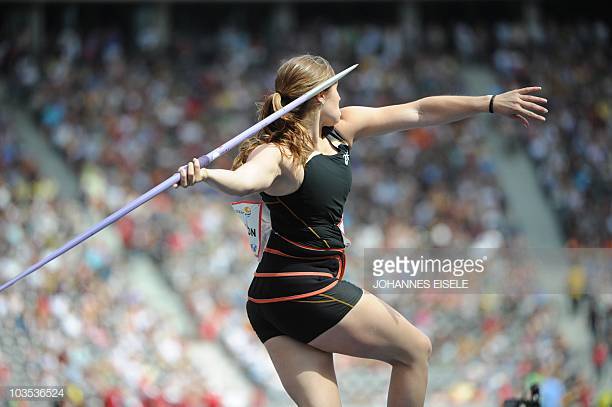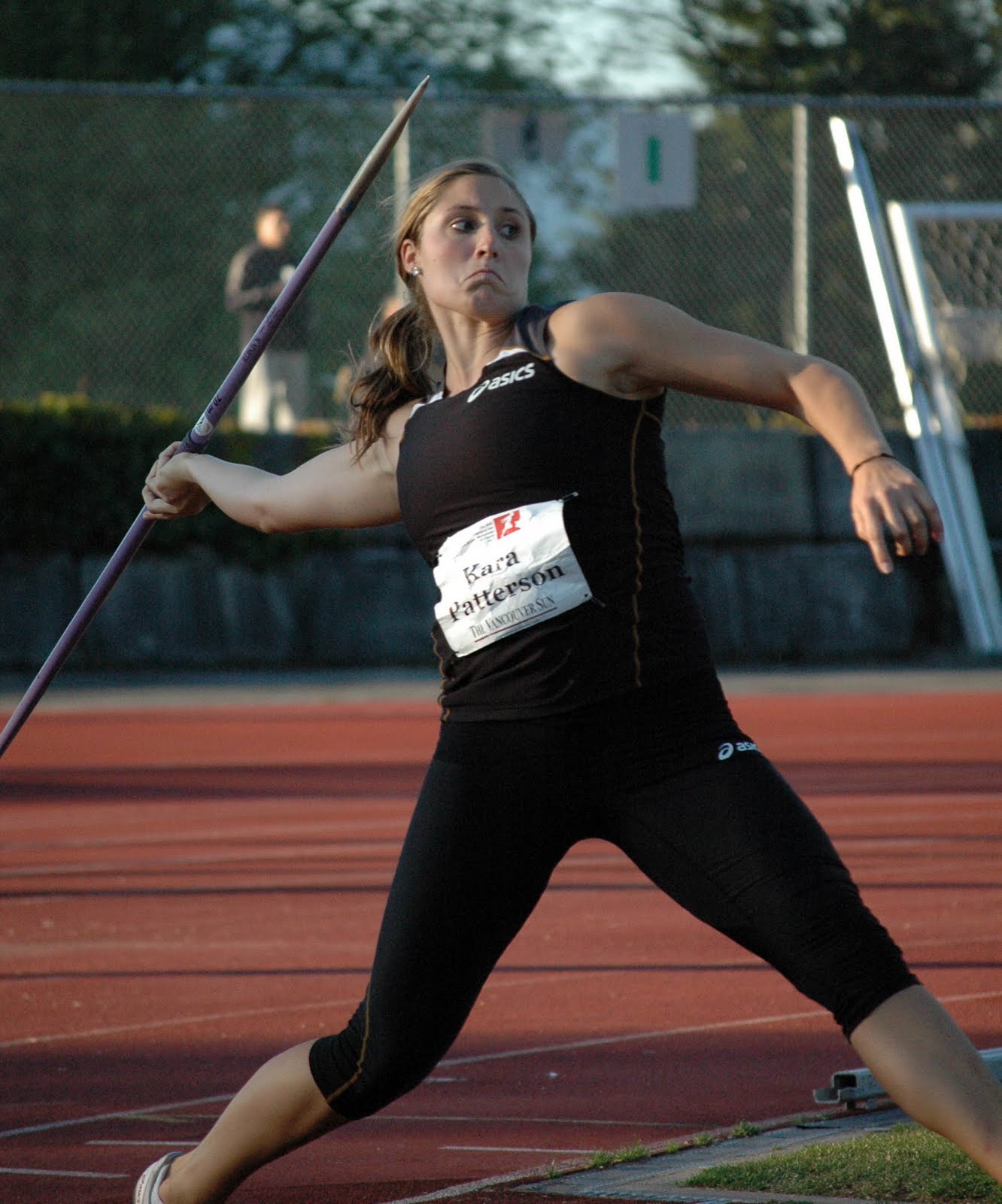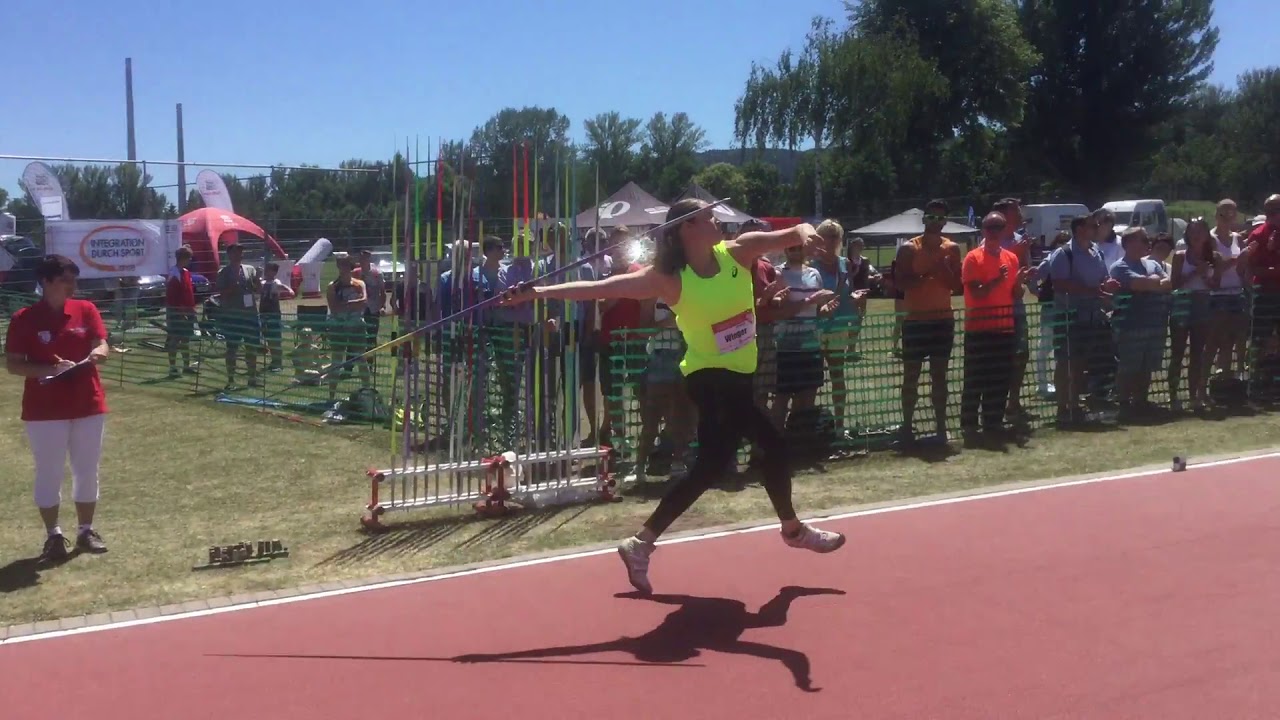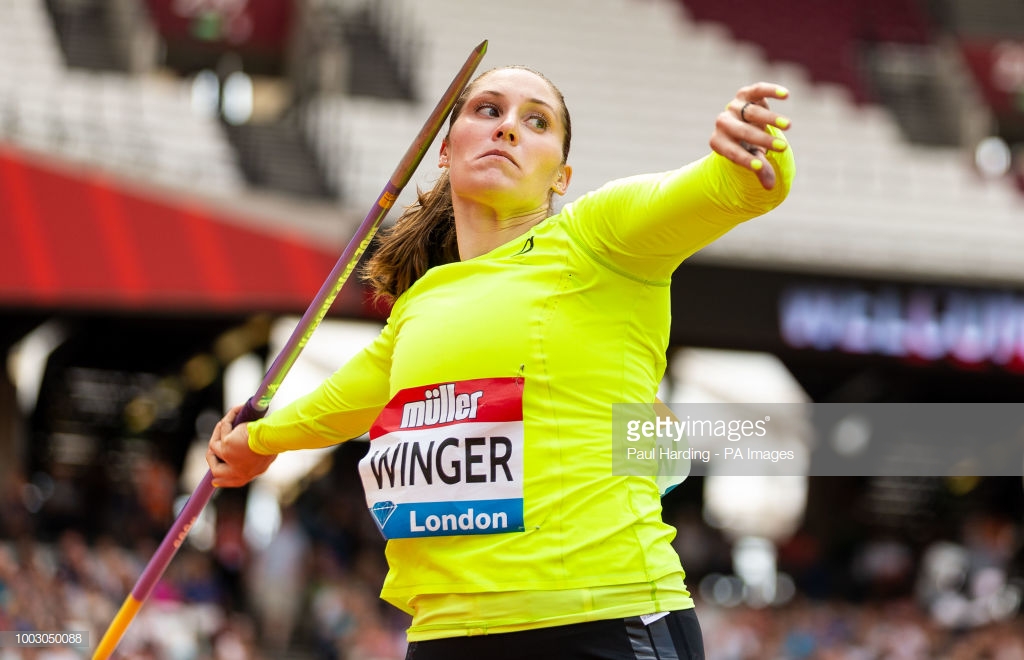I remember Mike mentioning at some point leading into 2012 that my hand *used* to be nice and high. There is a big part of me that thinks the perception of a high hand has more to do with the posture of an athlete who is confident vs. the cowering of an athlete who isn’t than the actual height of a hand, but that’s possibly a sports psychology discussion. For our purposes here, since I was asked to describe some drills for a high hand, how to get maximum flexibility in the throwing shoulder, or mental notes to “leave your arm behind,” I want to cover a few broad topics and then leave you with a list of some drills and video of one!
A high hand is kind of a misnomer. You want a BACK hand. If your throwing hand is too low, sure, it won’t go back as far as it can, but the same is true if your hand is too high. The goal should be to keep the arm parallel to the ground and the javelin almost the same, not some arbitrary definition of “high.” If your arm and hand are back as far as they can go, likely that arm will be “flat,” or “straight,” or “level,” not “high.” Watch Cyrus’s video of my American Record. I don’t think my arm is “high,” I think it’s back. As it was often in 2010!
Compared to 2018, it doesn’t look so different to me:
Those things being said, a nicely-controlled, level and stable arm can FEEL “high,” and there is some specific strength associated with getting into that position. Gaining the specific strength and mobility to get into a good carrying position is a feat in itself, but the second piece of that puzzle is learning to pull on the javelin from that flexible position. Acquiring the discipline and sequencing needed to use an excellent long arm requires its own kind of strength, patience, and mental fortitude. I really think the fear of what might happen when you pull from way back there behind your head is what halts most athletes’ progress in this weird event. There are drills for that, too!
Mental cues that have really helped me leave my arm back as long as possible are twofold:
1. Dana and I talk a lot about pronation and supination of the left and right hands, respectively. Your left thumb points down and your right thumb points up (if you’re right-handed). Every action has an equal and opposite reaction, so if you pronate your left hand/arm as long as possible, you’ll supinate (and leave long and “high”) your right hand/arm as long as possible back behind you. You can see this in the way Barbora throws as well. We try to couple that concept with the rotation of my right leg and hips and then core, but that’s getting too complicated for this blog.
2. One of the longest-lasting things Ty ever told me was to “hide the javelin behind your head.” I know which direction I’m heading, so putting my hand and the grip of the javelin right behind my head for as long as absolutely possible means it’s back behind me, and still within the frame of my body as I initiate the throw. Part of keeping the longest arm possible in the javelin throw is staying closed (meaning that your shoulders are perpendicular to the foul line as long as possible). If you get open (turn your shoulders too soon to face the sector), you shorten your throwing arm! So “hiding the javelin” helps me stay long, keep my hand “high” (because my head is pretty far off the ground, haha) and stay closed.
Three kinds of drills (that I can think of right now. I’m sure there are more and that people categorize them differently.):
1. Lateral raise/external rotation strengthening.
Help you develop the strength to simply hold your arm up with a javelin in your hand in a very stable position. This isn’t a normal thing for most people! Even the relatively light weight of our implement gets heavy in the course of a high-volume practice, so doing some strength work outside of throwing is helpful.
Hose drags across a field. We did this in high school and it was brutal. A literal garden hose that you hold in your hand in a solid javelin position and then do crossovers. Keep your arm as long and high as possible, and connect your core and lats to holding that position. The quality of the crossovers is not as important as your posture and the straightness of your arm behind you. Elbow bending will likely happen, but do your best to not let it! Do NOT shrug your shoulders. A relaxed shoulder gets more length.
Simple lateral dumbbell raises. Hands at waist up to external rotation and holding the dumbbell like a javelin. Start very light. Do not shrug your shoulders at any time in this movement. You could start with palms facing your body and then rotating up toward the ceiling as you raise your arms or start with palms facing out and go straight up. Maybe try both and see what feels best to you!
This drill I thought I made up last year but apparently other people do, too:
2. Decelerators.
Training the throw in the opposite direction that it normally happens keeps your decelerators (mostly some of your rotator cuff tendons and generally the back of your shoulder) healthy. It can also help you really feel strong in the end range of motion if you’re actively trying to get there under load instead of initiating a pull from there. The backs of your shoulders (your entire upper back) not only slow your arm down after you throw, but help you maintain posture and position while you’re approaching the throw and within it.
Reverse cable throws. A Jamie Myers special in my programming. Start light. Stand facing the cable machine with the handle where you would normally carry the javelin in your first approach steps (running straight forward). Pull it backwards, turning your shoulders as you go and turning your hand towards the sky like you would if you were holding a javelin. Standard instructions: Do NOT shrug your shoulder. Reach back as far as you possibly can against the load with good posture (point at the wall behind you). Return to start under control.
Any kind of pull-apart. Grab a little band at waist-height with bent arms and pull it apart. Put your arms straight out in front of you, palms up, and pull the band apart. Pull it apart diagonally.
3. Specific strength through extreme range of motion.
Javelin, as we know, involves putting your body into some intense positions. That’s what everyone is after when they ask about how to train this high hand, maximum shoulder flexibility, leave-your-arm-behind thing. And while you can put yourself into that position with some concentrated work, you also need to be able to get yourself out of it in an instant without tearing everything in your shoulder! Cue this section of drills.
Put a stick or javelin across your shoulders (like you might squat it). Hold it in your throwing hand like a javelin, and grasp it firmly with the other hand. Push with that other hand so you’re forcing the throwing hand backward another inch. Push back carefully with that throwing hand (initiate the movement from your lat/shoulder rather than your hand/elbow). Repeat. Really small range of motion, but at the very end of the overall picture.
Pullovers, sure, but with good core control. Only go as heavy as you can to still keep your butt and entire back on the bench. Get the strength in your flexible shoulders, not your shouldn’t-be-flexible lumbar spine.
Banded “standing throw.”
That’s all I’ve got for now. I’m happy to answer questions and am always interested to see what other people come up with for drills, too!







